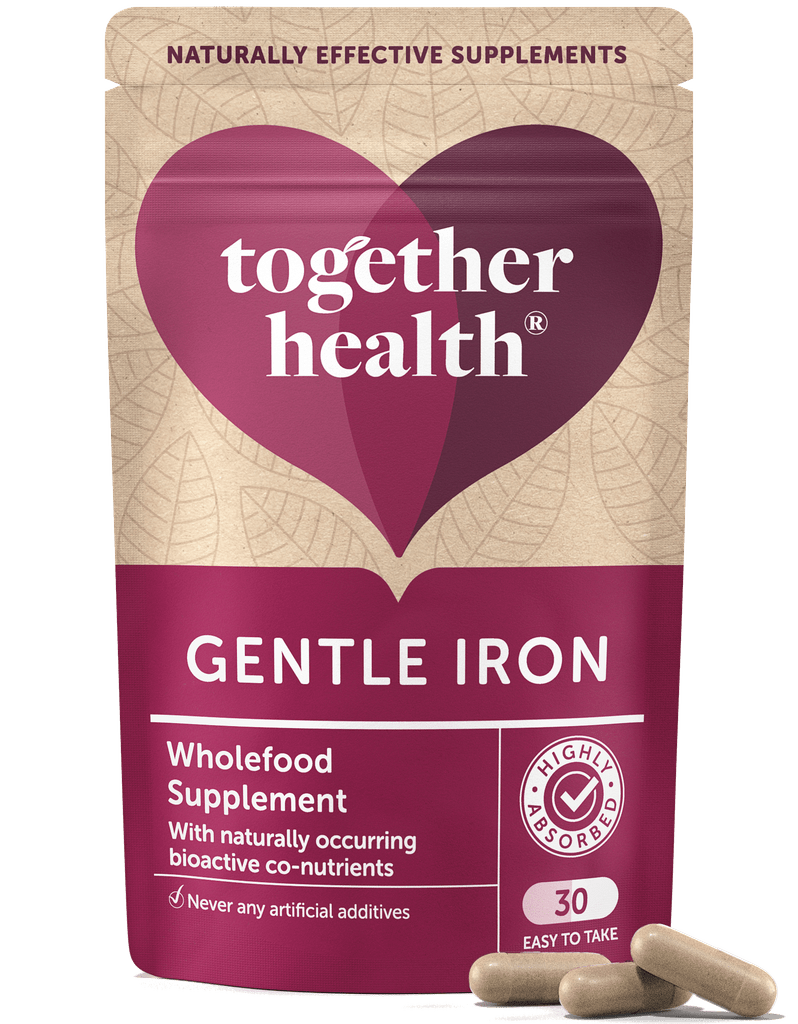Pale skin and tiredness are commonly associated with low iron levels, but there are some more unusual symptoms that may indicate that your stores of this essential mineral are running low. Developing pica (cravings for non-food items), restless legs and tinnitus are among the other lesser-known side effects caused by low iron levels, and an indication that you may benefit from either supplementation or boosting levels in your diet. Lola Biggs, dietician at natural health supplement brand Together Health, explains: “Iron is an essential mineral your body needs to function properly.
“It plays a vital role in the formation of red blood cells and supports everything from energy and brain health to hormones, skin, and hair. Without adequate iron, your body can’t deliver oxygen effectively to tissues, which impacts how you feel and function. For women, maintaining healthy iron levels is especially important due to the demands of menstruation and pregnancy. Unfortunately, many women don’t get enough iron through diet alone — particularly if you have heavy periods, digestive issues like IBS, or follow a vegan or vegetarian diet.”
Signs of low iron
“Symptoms of low iron can be very varied and often challenging to diagnose. These can include tiredness, dizziness, brain fog and irritability, hair thinning or shedding, brittle nails and even more unusual symptoms such as restless leg syndrome, anaemia and pica,” Lola adds.
Where to get iron — and how to absorb it better
Since your body can’t produce iron, it must come from your diet or supplements. There are two types of dietary iron:
- Heme iron – found in animal sources like red meat, poultry, liver, fish, and shellfish. It’s the most easily absorbed.
- Non-heme iron – found in plant-based sources such as lentils, beans, tofu, spinach, pumpkin seeds, and fortified cereals.
“Pair non-heme iron with vitamin C-rich foods (like oranges, strawberries, or bell peppers) to boost absorption,” Lola recommends. “I prefer to avoid tea and coffee around iron-rich meals as they contain polyphenols that inhibit absorption and also any calcium-rich foods, as they compete with iron in the gut.”
Smart snacking to support iron levels
The dietician says that incorporating iron-friendly snacks into your routine is an easy and effective way to support your levels. Suggestions include:
- Dried apricots – rich in both iron and vitamin C
- Pumpkin seeds – a powerhouse source of non-heme iron
- Hummus with red pepper strips – combines iron-rich chickpeas with vitamin C
- Smoothies with spinach, berries and a spoon of pumpkin seeds – tasty and nourishing
Iron supplement support
Alongside eating iron-rich foods, it may be worth considering supplementation to boost your iron levels. “The key is choosing a form that is effective but gentle on your stomach,” Lola says. “Together Health’s Gentle Iron (£8.49) is an award-winning, wholefood-based iron supplement designed to be easily absorbed and well tolerated. It contains wholefood iron, B6 and B12, which support normal blood formation, and naturally occurring co-factors (like enzymes and phytonutrients) that improve absorption and bioavailability.
“It’s also vegan and safe to take on an empty stomach, unlike many iron tablets that can cause cramps or digestive upset.”
Don’t forget to address the root cause
“While rebuilding iron stores is important, don’t overlook underlying causes like chronic bleeding or poor gut absorption. These should be addressed with a healthcare provider,” the dietician recommends. “If you suspect low iron, the first step is to speak to your GP and request a ferritin test along with a full iron panel. Keeping a daily symptom and food diary can also help track patterns and guide.”
Something to be aware of
If you get your ferritin levels checked at the doctor, ask to see the specific results afterwards, even if they come back as normal. The laboratory ranges that are considered to be normal range from anywhere between 11 to 306.8 ng/mL, but within this, there are optimal levels where we may begin experiencing symptoms, anywhere above or below this.
This was something I discovered after visiting the doctor due to developing tinnitus and shedding more hair than usual at the beginning of the year. My serum ferritin levels came back as normal, but it was only when I looked into my results further that I realised that at 19 ng/mL, they were almost at the bottom end of the scale.
For women aged between 18-39, serum ferritin levels between 50 to 70 ng/mL are considered normal, while anything below 30 ng/mL is classed as low. Meanwhile, for women aged between 40-55, 50 to 100ng/mL is classed as the normal range, with anything below this considered low. Thankfully, after taking an iron supplement and focusing on eating healthy sources of iron through my diet, I felt better within a few weeks, so it is well worth looking into and not putting up with annoying or unexplained symptoms.
Read the full article here








